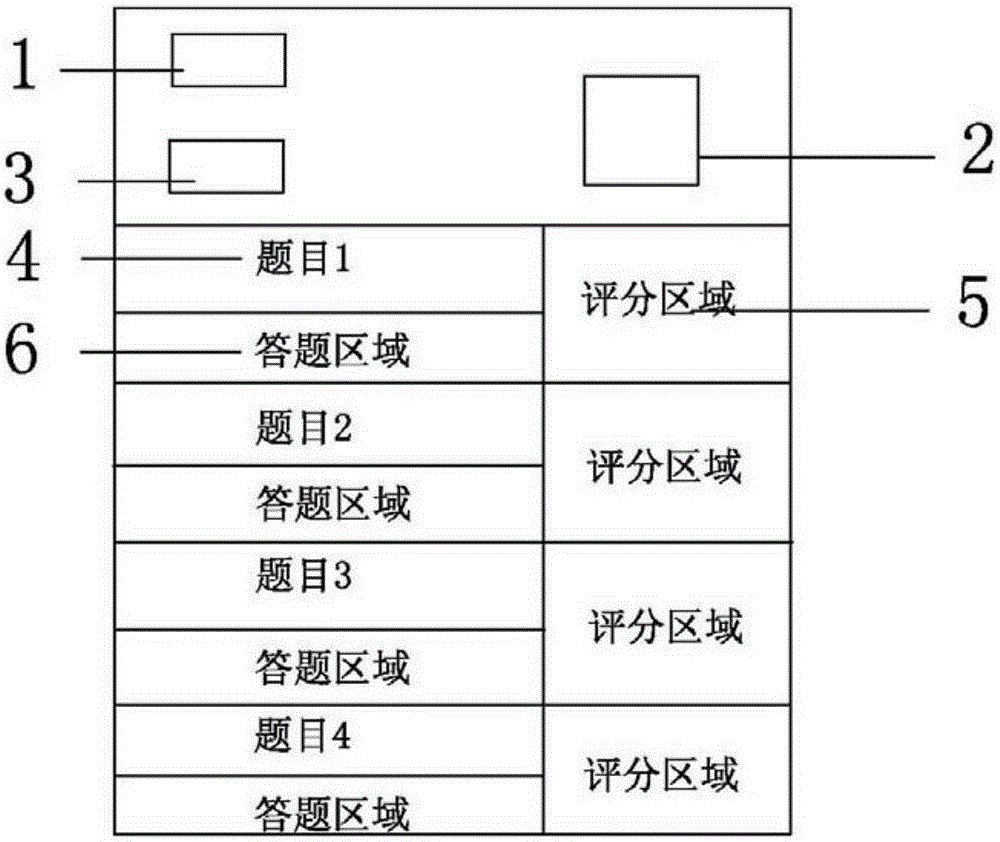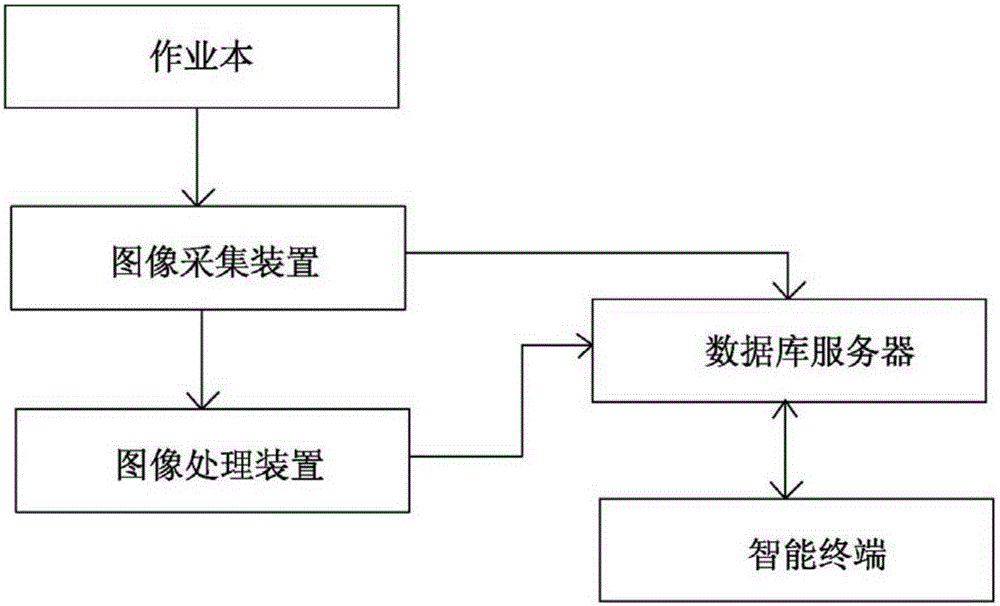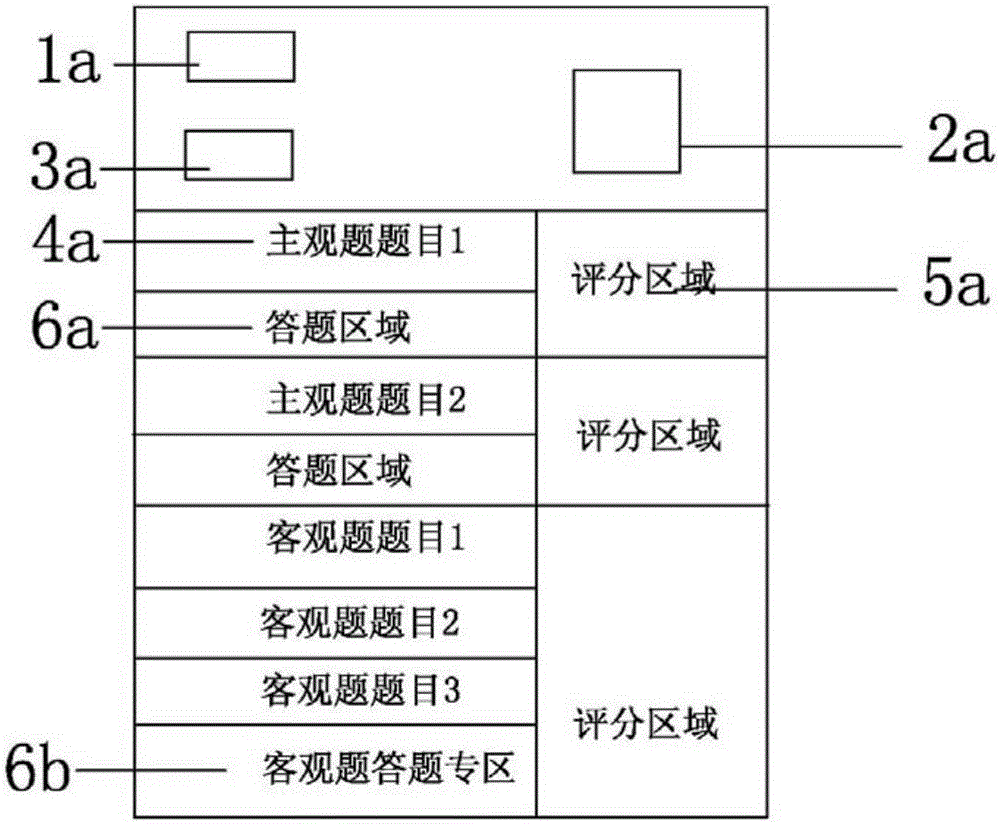O2O Internet homework book, O2O Internet homework book system and realization method
A workbook and Internet technology, applied to instruments, character and pattern recognition, computer parts, etc., can solve the problems of low search efficiency, unfavorable management of operations, and prone to errors in manual statistics, and achieve the effect of strengthening preservation
- Summary
- Abstract
- Description
- Claims
- Application Information
AI Technical Summary
Problems solved by technology
Method used
Image
Examples
Embodiment 1
[0033] Such as figure 1 As shown, the questions involved in the workbook are all subjective questions. Each page of the workbook is provided with a barcode area 1, a student information area 2, a subject 3, a homework question 4, an answer area 6, a scoring column area 5, and a student information area. 2 Including student name, class and student number, etc.; each subjective question corresponds to a scoring column area; the barcode area is set with a barcode, and the barcode contains the classification information of the assignment, such as chapters, sections, knowledge points, etc.
[0034] homework system, such as figure 2 As shown, it includes an operation book, an intelligent terminal, an image acquisition device, an image processing device, and a database server; the image acquisition device is used to collect images on the operation book, and save the collected operation book images to the database server; the image acquisition device can be a scanning instrument or ...
Embodiment 2
[0047] The difference between embodiment 2 and embodiment 1 is that the questions in embodiment 2 include both subjective questions and objective questions.
[0048] Such as image 3 As shown, the workbook includes barcode area 1a, student information area 2a, subject 3a, homework title 4a, scoring area 5a, and answer area; student information area 2a includes student name, class and student number, etc.; barcode area 1a is provided with a barcode , the barcode contains the classification information of the job, such as chapters, sections, knowledge points, etc.
[0049] The answering area includes two parts, one is the subjective question answering area 6a, and the other is the objective question answering area 6b; each subjective question is provided with a scoring area 5a, and the scoring area 5a is used by the teacher to review the answers to the subjective questions. The objective question and answer area is used to fill in the answers to one or more objective questions....
Embodiment 3
[0055] Such as Figure 4 As shown, the questions involved in the workbook are all objective questions. Each page of the workbook is provided with a barcode area 1c, a student information area 2c, a subject 3c, a homework topic 4c, and an objective question answering area 6c. The student information area 2c includes student Name, class and student number, etc.; the barcode area is set with a barcode, which contains the classification information of the homework, such as chapters, sections, knowledge points, etc. The objective question answering area 6c is used to fill in the answers to all objective questions.
[0056] The operating system is the same as that in Embodiment 1.
[0057] During data processing, the image processing device recognizes and processes the graphics in the objective question and answer area.
PUM
 Login to View More
Login to View More Abstract
Description
Claims
Application Information
 Login to View More
Login to View More - R&D
- Intellectual Property
- Life Sciences
- Materials
- Tech Scout
- Unparalleled Data Quality
- Higher Quality Content
- 60% Fewer Hallucinations
Browse by: Latest US Patents, China's latest patents, Technical Efficacy Thesaurus, Application Domain, Technology Topic, Popular Technical Reports.
© 2025 PatSnap. All rights reserved.Legal|Privacy policy|Modern Slavery Act Transparency Statement|Sitemap|About US| Contact US: help@patsnap.com



